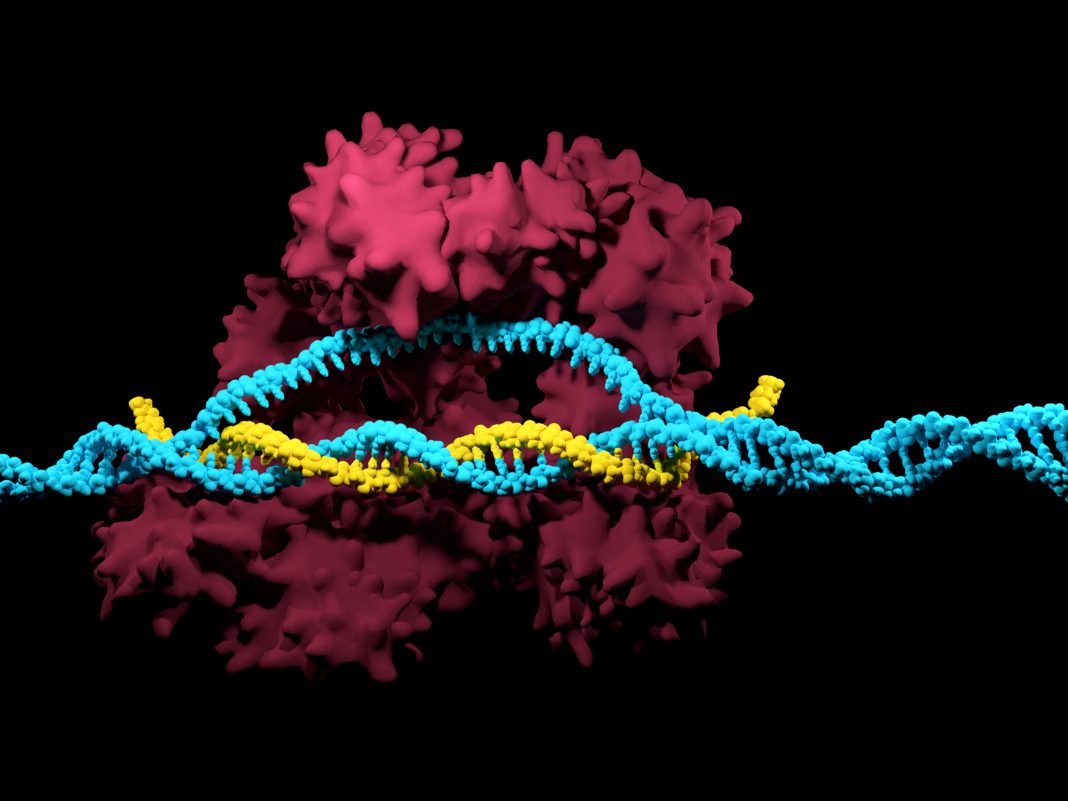CRISPR-Cas9 genome editing technology is, on many levels, hard to control. Scientists have known for some time that bacteria have developed methods—”anti-CRISPR” systems—to interfere with Cas nuclease function in the cell. Now, high-throughput assays developed at the Broad Institute have identified the first small-molecule “anti-CRISPRs”, work that will not only lead to more precise control of genome editing technology, but lays the foundation for further study of these molecules.
The research, described in the paper titled, “A High-Throughput Platform to Identify Small-Molecule Inhibitors of CRISPR-Cas9” is published in the journal Cell.
“These studies lay the foundation for the rapid identification and use of small-molecule inhibitors against both SpCas9 and next-generation CRISPR-associated nucleases,” said Amit Choudhary, PhD, of the Broad Institute. “Small-molecule inhibitors targeting CRISPR-associated nucleases have the potential for widespread use in basic, biomedical, and defense research, as well as in biotechnological applications.”
Choudhary and colleagues screened a diverse collection of small molecules to identify the small-molecule inhibitors of Streptococcus pyogenes Cas9 (SpCas9.) To do this, they developed high-throughput primary and secondary assays for SpCas9-DNA binding and SpCas9 DNA-cutting activity, respectively. For the primary assay, they used fluorescence polarization to monitor the interaction between SpCas9 and a fluorophore-labeled DNA segment containing PAM sequences. In the secondary assay, they used automated microscopy to measure fluorescence changes induced by SpCas9-mediated DNA cleavage of a reporter gene in cells.
Using these assays, the team identified two lead compounds that disrupt the ability of SpCas9 to bind DNA and inhibit SpCas9-mediated DNA cleavage in a dose-dependent manner in mammalian cells. Since they block DNA binding by the enzyme, these molecules also inhibit catalytically-impaired technologies of SpCas9, including those for transcriptional activation, and are stable in human plasma.
The small molecules readily enter cells and are much smaller than the previously discovered anti-CRISPR proteins. They weigh <500 Da, are cell permeable, and allow for reversible and dose-dependent control of SpCas9-based technologies, including its applications for gene editing, base editing, and epigenetic editing in mammalian cells.
Although anti-CRISPR proteins that target SpCas9 exist, they are large and impermeable to cells, irreversible in action, can be chewed up by proteases, and may pose the risk of adverse immune reactions in the body. By contrast, small-molecule inhibitors are proteolytically stable, reversible, and generally non-immunogenic and can easily be delivered to cells through passive diffusion. In addition, they can be synthesized on a large scale at low cost with little batch-to-batch variability.

Currently, SpCas9 is being developed as a gene therapy agent for multiple conditions, including HIV, vision disorders, muscular dystrophy, and other hereditary disorders. But these therapeutic applications would greatly benefit from precise control over the dose and timing of SpCas9 activity to reduce off-target effects. Controlling these aspects of SpCas9 activity could also benefit other applications, such as efficiently editing the DNA of model organisms to model and study disease, and the use of gene drives in genetically engineered mosquitoes engineering mosquitoes to curb the spread of malaria and other mosquito-borne diseases.
“These results lay the foundation for precise chemical control over CRISPR-Cas9 activities, enabling the safe use of such technologies,” Choudhary said. “However, these molecules are not ready for applications in humans and not tested for efficacy in organisms.”
In future studies, the researchers plan to identify the inhibitors’ binding sites on the SpCas9:gRNA complex, examine their mechanism of action, and optimize their potency. They will also determine whether the molecules interact with other targets in mammalian cells, and assess their specificity toward other CRISPR-associated nucleases. Early results included in the Cell paper indicate that the molecules are quite specific for their target, as they have no effect on a distantly-related CRISPR enzyme, Cas12a.


